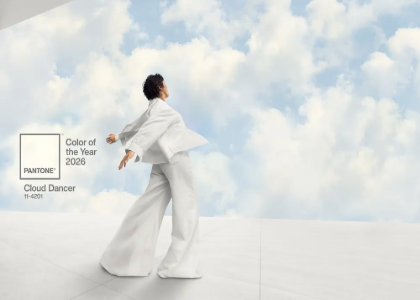Blog

The Art of Creating a Beautiful Logo: Symmetry
What makes a logo beautiful? Is it its overall style or the color palette used? Is it rather the addition of an icon that is both unique and representative? What about balance? Many rules and conventions dating back to antiquity are still prized in the artistic field today. So let us explain why you should consider symmetry when creating your logo.
What is symmetry?
As we just mentioned, certain conventions have been used for centuries in different fields, including architecture, design and logos. In addition to the golden ratio, symmetry remains a way to make something cohesive and pleasant.
Specifically, symmetry is a mathematical and artistic concept that describes an exact correspondence between shapes or arrangements of patterns on either side of a point, line, or plane. In other words, it's about making sure that both sides of an image, building, or object are the same, much like the reflection of a mirror.
Why consider symmetry when creating your logo?
But then, why should you consider symmetry when creating your company logo? For starters, a symmetrical logo is more likely to be considered beautiful. In fact, our eye is attracted to what is symmetrical and orderly. This can then give an impression of completeness and balance. In addition, it also gives you the opportunity to create something simple and minimalist, two important trends in recent years.
Also, a symmetrical logo can look more professional, which can be a plus if it's your first emblem or you've just started your company. By having a logo that is symmetrical, you give the impression that it has been thought out and worked on.
How do I create a symmetrical logo?
You don't have to become a mathematician to be able to create a symmetrical logo. Just follow a few basic rules to make sure you create something well-balanced.
First, if you want to use a shape for the background of your logo, for example in a badge logo, imagine a line running vertically across the entire thing. You need to make sure that both sides are identical and have the same dimensions. You can decide to use a circle, square, triangle or shield if you respect the proportions. Remember that the center is like a mirror. Each side is a reflection. If you add an something on the left, you must also add it on the right.
But what if you need to add text to your logo, such as your business name or slogan? To keep it symmetrical, make sure that there are an equal number of characters on both sides so that everything remains centered. If you're using a logo editor like FreeLogoDesign, when you move a component, a line will pop up to help make sure it's all in the middle.
Three examples of well-known symmetrical logos
Since it's often easier to understand something when you see examples, we've found three logos from well-known brands that have opted for symmetry. Symmetry is used for company emblems from a wide variety of fields and remains something timeless.
Chanel
Let's start with one of our favorite logos, Chanel. Simple, elegant, timeless and representative, it is one of the most famous luxurious emblems in the world. In addition, it is a symmetrical logo. The two Cs are identical: they are the same size and color. It is easy to see that each side is a reflection while being a tribute to the founder Gabrielle Coco Chanel. It is therefore no coincidence that several luxury brands have subsequently opted for monograms for their logos.
Would you like to know more? Discover the origin of the Chanel logo.
Starbucks
Another logo that we find particularly good is the Starbucks logo. Although there are several components and lines, the result is well balanced and symmetrical. However, this has not always been the case. Starbucks' first logo, which was brown and white, used an illustration of a mermaid looking slightly to the right. Over time and during a few redesigns, the emblem has been simplified and symmetry has been established. Every strand of hair, part of the tail or crown tip is identical on the other side for a successful result.
Volkswagen
The circle is the most used shape by car manufacturer logos. Mercedes-Benz, Audi, Alfa Romeo and others have chosen it to represent the wheels, a steering wheel, but also movement and continuity. Among the examples of symmetrical logos, we can add to this list the emblem of Volkswagen. Although the juxtaposition of the V and the W has been used for nearly 100 years now, it remains a way of using these two letters symmetrically, thus creating a balanced whole. The Volkswagen logo remains a good example of design where you have to think outside the box to achieve the desired result.
In conclusion, it is not mandatory to use symmetry when creating your next logo, but it is still a way to have a look that is balanced and professional. So that's something to consider!
In the examples mentioned, several use a circle. Do you know the meaning of this shape? Let us explain why you should create a logo with a circle in this article.
More tips and tricks on the blog


